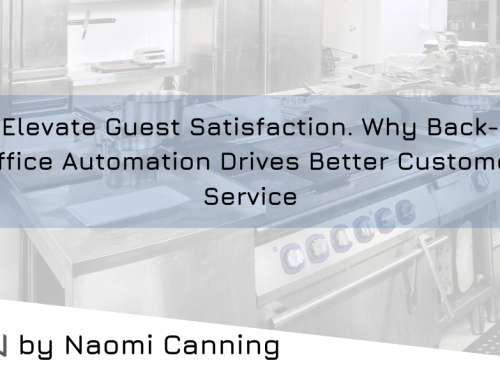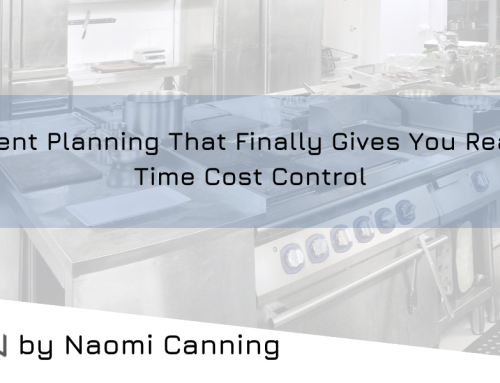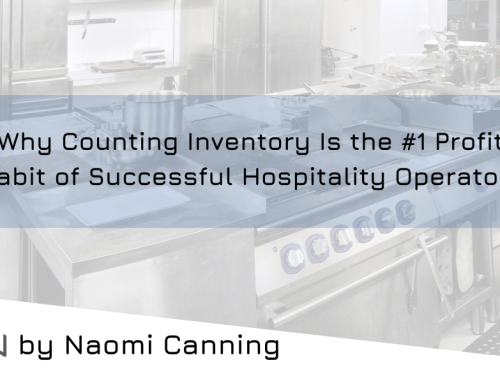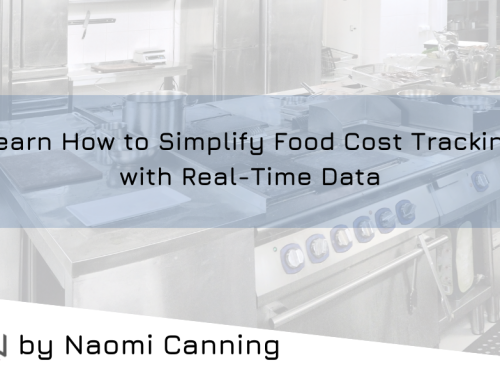Running a restaurant involves juggling numerous tasks, with managing finances and inventory often becoming complex challenges. Did you know that up to 75% of restaurants fail in their first year due to poor financial management? This blog post will guide you through Accounts Payable (AP) Automation, an innovative solution that streamlines your restaurant accounting and inventory controls.
Ready for a smoother financial journey at your eatery? Let’s dive in!
Key Takeaways
- AP automation streamlines restaurant accounting processes by eliminating manual data entry, centralizing invoices, and facilitating remote approval.
- Implementing AP automation helps optimize cash flow by ensuring timely payments, reducing late fees, and allowing better allocation of funds for business growth.
- AP automation reduces the risk of fraud in restaurant accounting through security measures such as user permissions and real-time monitoring.
Revolutionizing Restaurant Business with AP Automation
AP Automation is a game-changer in the restaurant industry, offering significant improvements to traditional accounting processes. Manual data input and tedious paperwork have long been time-consuming aspects of restaurant management.
With AP Automation though, it’s a different story altogether – these tasks are streamlined, making operations more efficient.
In addition, it eliminates human errors that can lead to financial discrepancies. Its digital nature allows for real-time tracking and reporting, providing owners with up-to-the-minute insights into their finances.
Not only does this aid in quicker decision-making but also ensures better fiscal control – all crucial elements for achieving success in the highly competitive food services sector. Undeniably, AP Automation has heralded a new era in restaurant accounting.
Benefits of AP Automation for Restaurant Accounting
AP automation provides numerous benefits for restaurant accounting, including streamlined invoice processing, tracking payment due dates, optimized cash flow, reduced fraud risk, and increased efficiencies in data entry and GL coding.
Streamlining invoice processing
Streamlining the process of invoice management can significantly reduce the administrative burden in restaurant accounting. Applying AP Automation brings a host of benefits:
- Eliminates manual entry: By auto-populating invoice data, human error is minimized and accuracy is enhanced.
- Centralizes invoices: AP Automation gathers all invoices into one system, preventing misplaced or lost bills.
- Speeds up processing time: With automated matching of purchase orders, deliveries, and invoices, discrepancies can be spotted quickly and corrections are made faster.
- Facilitates remote approval: Even when you’re not physically present in your restaurant, you can approve payments via a digital platform.
- Aids in real-time tracking: The status of every bill is clearly visible, providing immediate insight into outstanding payments.
- Enhances supplier relationships: Prompt payment contributes positively to your partnership with suppliers.
Tracking payment due dates
Integrating AP Automation into your restaurant accounting system provides a phenomenal advantage in tracking payment due dates. It significantly reduces the hassle of manual monitoring and potential missed payments that may lead to penalties or damage supplier relationships.
The software keeps a meticulous record of all invoices, their respective due dates, and sends automatic reminders when payments are imminent. This not only streamlines your payment process but also optimizes cash flow by ensuring timely settlements.
Embrace AP automation for clear sighted control over your restaurant’s financial obligations.
Optimizing cash flow
One of the key benefits of implementing AP automation in your restaurant accounting process is the ability to optimize cash flow. By streamlining invoice processing and tracking payment due dates, you can ensure that your bills are paid on time, avoiding any late fees or penalties.
This allows you to better manage your cash flow and allocate funds where they are needed most, whether it’s paying suppliers, purchasing inventory, or investing in business growth. With AP automation, you can take control of your finances and make informed decisions that will ultimately lead to improved profitability for your restaurant.
Reducing fraud risk
One of the significant advantages of AP automation for restaurant accounting is the reduction in fraud risk. By implementing an automated system, restaurant owners can minimize the chances of fraudulent activities occurring within their financial operations.
With manual processes, there is a higher likelihood of unauthorized access to sensitive information or tampering with invoices and payments. However, AP automation provides security measures such as user permissions and approval workflows that ensure proper checks and balances are in place.
The system also enables real-time monitoring and tracking, allowing owners to quickly identify any suspicious activities and take immediate action. By reducing the risk of fraud, restaurant owners can maintain their financial integrity and protect their bottom line from potential losses.
Increasing efficiencies in data entry and GL coding
One of the key benefits of implementing AP automation in restaurant accounting is the ability to increase efficiencies in data entry and GL (general ledger) coding. By automating these processes, restaurant owners can save time and reduce errors, resulting in a more accurate and streamlined accounting system. Here are some ways AP automation enhances data entry and GL coding:
- Eliminating manual data entry: With AP automation, invoices are electronically captured and automatically entered into the accounting system. This eliminates the need for staff to manually input invoice details, reducing the risk of human error.
- Streamlining document management: AP automation software allows for easy organization and storage of invoices and supporting documents. This makes it simple to retrieve information when needed, improving efficiency during audits or when analyzing financial reports.
- Faster approval process: AP automation provides a centralized platform for approving invoices digitally. Decision-makers can access invoices from anywhere, making it easy to review, approve, or request additional information without delays caused by physical paperwork.
- Automating GL coding: With AP automation, GL coding can be automated based on predefined rules. This eliminates the need for manual assignment of general ledger codes to each invoice line item, saving time and reducing errors.
- Integration with accounting software: Many AP automation solutions integrate seamlessly with popular accounting software systems such as QuickBooks or Xero. This integration ensures that data flows smoothly between both systems, minimizing discrepancies and simplifying financial reporting.
Enhancing Inventory Control with AP Automation
AP Automation enhances inventory control in restaurants by tracking ingredient costs, comparing and controlling food costs, monitoring inventory levels, and streamlining ordering processes.
Maximizing Profits through Effective Inventory Control
Effective inventory control is crucial for maximizing profits in a restaurant business. By closely monitoring ingredient costs, comparing and controlling food costs, and monitoring inventory levels, restaurant owners can identify areas where they can cut costs without compromising the quality of their menu offerings.
AP automation plays a key role in this process by streamlining ordering processes and ensuring accurate data entry. With real-time visibility into inventory levels, restaurant owners can avoid overstocking or running out of essential items, thus minimizing waste and optimizing cash flow.
Implementing AP automation not only saves time but also reduces the risk of errors, late payments, and penalties associated with manual inventory management.
Tracking ingredient costs
By implementing AP automation in your restaurant, you can effectively track ingredient costs and gain better control over your inventory. With automated systems, you no longer have to manually keep track of prices or rely on outdated spreadsheets.
The software allows you to easily monitor and analyze the costs of ingredients, helping you identify any discrepancies or areas where savings can be made. This level of precision ensures that you are optimizing your resources and maximizing profits in a timely manner.
Comparing and controlling food costs
Understanding and managing food costs is a vital aspect of running a successful restaurant. Below is a table that highlights key elements in comparing and controlling these costs with the help of AP Automation.
| AP Automation Features | Benefits for Controlling Food Costs |
| Real-Time Access to Data | Enables instant comparison of food costs, allowing swift decision-making. |
| Vendor Price Tracking | Keeps track of fluctuating vendor prices, enabling cost-effective ordering. |
| Invoice Matching | Automatically matches invoices with purchase orders and delivery receipts, ensuring accurate payment and cost calculation. |
| Automated Budget Monitoring | Monitors spending against budget in real-time, preventing overspending on food items. |
| Data Analysis | Provides insights on most and least profitable food items, helping to optimize menu and pricing. |
This table demonstrates how AP Automation can streamline processes and provide actionable insights to help restaurant owners effectively compare and control food costs.
Monitoring inventory levels
Monitoring inventory levels through AP automation is a crucial aspect of running a successful restaurant. It ensures you always have enough stock to meet customer demand and helps prevent wastage from overstocking. The table below outlines how AP automation assists in maintaining optimal inventory levels.
| Features | Benefits |
| Real-Time Inventory Tracking | AP automation provides real-time tracking of inventory levels, ensuring you always know what’s in stock and what’s running low. This prevents running out of key ingredients and disappointing customers. |
| Automated Reordering | When inventory levels drop to a specified point, AP automation can trigger auto-reordering. This saves time and ensures you never run out of essential items. |
| Inventory Forecasting | AP automation tools can analyze sales data to predict future inventory needs. This helps in planning purchases and preventing overstocking or understocking. |
| Waste Reduction | AP Automation provides data on which items are frequently left unused, enabling you to adjust your ordering habits and reduce waste. This results in cost savings. |
Monitoring inventory levels with AP automation is a smart strategy for restaurant owners to keep their business running smoothly, prevent stock shortages, minimize waste, and maximize profits.
Streamlining ordering processes
- Simplify the ordering process by automating it with AP technology
- Eliminate the need for manual order forms and phone calls
- Order ingredients and supplies directly from approved vendors through the AP system
- Set up automatic reordering for frequently used items
- Track delivery dates and receive notifications for any delays or issues
- Easily compare prices and select the best deals from different suppliers
- Streamline communication between the restaurant and suppliers through electronic messages within the AP platform
- Reduce errors and minimize stockouts by accurately tracking inventory levels in real – time
- Generate reports on order history, quantities, and costs for better analysis and decision-making.
In-depth Analysis of 4 Types of Inventory Management
Efficient inventory management is crucial for restaurant owners to maximize profits and minimize waste. There are four primary types of inventory management systems that can greatly benefit the restaurant industry.
First is the Perpetual Inventory System, which utilizes technology to continually track stock levels in real-time. This system provides accurate data on ingredient usage, allowing restaurateurs to optimize purchasing decisions and avoid overstocking or understocking items.
By having a clear understanding of their inventory levels at all times, restaurants can reduce food spoilage and ensure they have enough supplies to meet customer demand.
Next is the Just-In-Time (JIT) Inventory System, which focuses on minimizing storage costs by receiving goods only as needed for production or service. With JIT, restaurant owners can maintain lower inventory levels while still meeting customer needs promptly.
This system requires careful coordination with suppliers to ensure timely delivery and avoid any disruptions in the supply chain.
The Economic Order Quantity (EOQ) model calculates the ideal order size that minimizes holding costs while ensuring sufficient stock availability. By considering factors such as demand rate, ordering cost, and carrying cost, restaurants can determine how much they need to order each time while keeping expenses in check.
Lastly, ABC Analysis categorizes inventory based on its value and importance within a restaurant’s operations. A-items represent high-value items with low consumption rates that require close monitoring due to their impact on overall profitability.
B-items are moderately important items with moderate consumption rates, whereas C-items include low-value items that are frequently used but do not significantly affect financial outcomes. With this analysis method, restaurants can prioritize their attention and resources towards managing high-value inventories more effectively.
By understanding these four types of inventory management systems and implementing them appropriately within their operations, restaurant owners can enhance efficiency across their supply chains while reducing unnecessary costs associated with excess stock or inadequate inventory levels.”
How AP Automation Saves Money and Reduces Risk
AP automation saves money and reduces risk by simplifying invoice management, managing supplier negotiation and costs, improving accuracy, and preventing errors. Read on to discover the benefits of implementing AP automation in your restaurant accounting processes.
Simplifying invoice management
Running a restaurant business involves handling numerous invoices on a daily basis. AP automation can simplify the invoice management process, allowing restaurant owners to save time and effort. Here are some ways in which AP automation simplifies invoice management:
- Digital storage: Instead of dealing with stacks of paper invoices, AP automation allows restaurant owners to store all their invoices digitally. This not only saves physical space but also makes it easier to locate and retrieve specific invoices when needed.
- Automated data entry: With AP automation, manual data entry becomes a thing of the past. Restaurant owners no longer have to spend hours entering invoice details into spreadsheets or accounting software. The system automatically captures relevant information, such as vendor name, invoice number, and due date.
- Streamlined approval process: Invoices often require multiple levels of approval before they can be paid. AP automation streamlines this process by allowing restaurant owners to set up workflow rules for different types of invoices. The system routes each invoice to the appropriate approver, ensuring a smooth and efficient approval process.
- Electronic payment integration: AP automation can integrate with various payment platforms, enabling restaurant owners to pay their vendors electronically. This eliminates the need for manual check writing and mailing, making the payment process faster and more convenient.
- Real-time visibility: With AP automation, restaurant owners have real-time visibility into their accounts payable status. They can easily track the progress of each invoice from receipt to payment, ensuring that everything is on schedule and no invoices fall through the cracks.
- Enhanced accuracy: Manual data entry is prone to human errors, which can lead to costly mistakes in restaurant accounting. By automating the data entry process, AP automation reduces the risk of errors and improves overall accuracy in invoice management.
- Audit readiness: In case of an audit or compliance review, having all invoices stored digitally makes it much easier to provide necessary documentation quickly and accurately. Restaurant owners can simply search for specific invoices and generate reports as needed.
Managing supplier negotiation and costs
Managing supplier negotiation and costs is a crucial aspect of running a successful restaurant business. With AP automation, you can streamline this process and ensure that you are getting the best deals from your suppliers.
By automating invoice management, you can easily track and compare supplier prices, making it easier to negotiate better contracts and save on costs. Additionally, AP automation improves accuracy in invoicing, preventing errors that could lead to overpaying suppliers.
This not only saves money but also reduces the risk of late payments or penalties. Overall, AP automation helps restaurant owners effectively manage supplier negotiation and costs, maximizing profitability in their operations.
Improving accuracy and preventing errors
- AP automation minimizes the risk of human error by eliminating manual data entry and reducing the need for manual calculations.
- Digitized invoices are automatically captured and stored, reducing the chances of invoices getting lost or misplaced.
- The system automatically matches invoices with purchase orders and contracts, ensuring accuracy in billings and preventing overpayments or duplicate payments.
- By automating the approval workflow, AP automation ensures that all invoices go through a standardized review process, reducing the risk of unauthorized or fraudulent payments.
- AP automation provides real – time visibility into payment statuses, allowing restaurant owners to easily track and monitor outstanding payments, creating transparency in financial operations.
- The system also generates detailed reports and analytics on spending patterns, helping owners identify discrepancies or irregularities in their accounting processes.
- With AP automation, restaurant owners can set up automated reminders for payment due dates, avoiding late payment penalties and improving cash flow management.
Note: Do NOT write a wrap-up in the last paragraph.
Reducing the risk of late payments and penalties
Late payments and penalties can have a significant impact on a restaurant’s financial health. With AP automation, restaurant owners can greatly reduce this risk. By automating the entire invoice management process, from receipt to payment, restaurants can ensure that invoices are processed and paid on time, avoiding any potential late fees or penalties.
The automated system also sends reminders for upcoming payment due dates, helping owners stay organized and avoid missing important deadlines. This not only saves money but also maintains positive relationships with suppliers by showing professionalism and commitment to timely payments.
Ultimately, reducing the risk of late payments and penalties contributes to a healthier bottom line for restaurant businesses.
Conclusion
In conclusion, implementing AP automation in a restaurant can revolutionize the way accounting and inventory control are managed. By streamlining invoice processing, tracking payment due dates, optimizing cash flow, reducing fraud risk, and increasing efficiencies in data entry and GL coding, AP automation brings numerous benefits to restaurant owners.
Additionally, when it comes to inventory control, AP automation allows for effective management of ingredient costs, comparison and control of food costs, monitoring of inventory levels, and streamlined ordering processes.
With these advantages in mind, embracing AP automation is a surefire way for restaurants to enhance their financial operations and stay ahead in the industry.
FAQs
1. What is AP automation and how does it enhance restaurant accounting and inventory control?
AP automation refers to the use of technology and software to streamline and automate the accounts payable process in a restaurant. By digitizing invoices, automating data entry, and implementing electronic payment systems, AP automation reduces manual errors, saves time, improves cash flow management, and enhances overall accuracy in accounting and inventory control.
2. How can AP automation help with tracking expenses?
AP automation allows restaurants to easily track expenses by digitally capturing all invoice information. This eliminates the need for manual data entry and enables real-time visibility into spending patterns. With automated expense tracking, restaurants can analyze their costs more efficiently, identify areas of overspending or potential cost savings, and make informed decisions regarding budgeting.
3. Does AP automation improve vendor relationships?
Yes, implementing AP automation can greatly improve vendor relationships for restaurants. By automating invoice processing and payments, restaurants can ensure timely payments to vendors which promotes better communication and strengthens trust between both parties. Additionally, having access to accurate financial data through automated reporting helps facilitate smoother negotiations with vendors by providing insights into purchasing trends or opportunities for volume discounts.
4. Are there security measures in place when using AP automation?
Yes, modern AP automation platforms prioritize security protocols to protect sensitive financial information within the restaurant’s system. These platforms utilize encryption technology during transmission of data as well as secure servers for storage purposes. Access controls are implemented to restrict unauthorized access while also allowing designated individuals within the organization appropriate levels of permission based on their roles or responsibilities related to accounts payable processes





